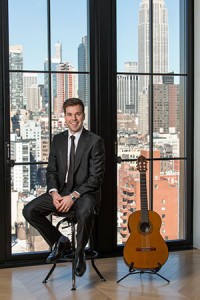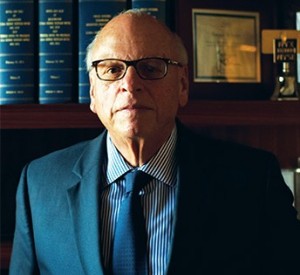When 15 Central Park West was set to kick off construction in 2005, the building’s co-developer William Zeckendorf made what would turn out to be a prescient purchase. He paid his firm, Zeckendorf Development, $10.7 million for a three-bedroom pad on the 41st floor. The building went on to become the most successful condominium in New York’s history, the “Limestone Jesus” of luxury living. And Zeckendorf’s $10.7 million bet netted him, in the span of just five years, a profit of more than $30 million.
“Don’t get high on your own supply,” Michelle Pfeiffer’s character warned in the 1980s cult classic “Scarface.” But many developers who’ve ignored that maxim have come out on top.
Sponsors buying their own product is so commonplace in New York real estate that brokers use it as a marketing tactic, banks set limits on how many units a sponsor can take out of circulation and buyers have come to like the perks of calling developers their “neighbor.”
One key reason developers buy in is to reap the rewards of an appreciating product, insiders said.
“The downside of building a condo is, once you’ve sold, if the building continues to appreciate in value, the developer doesn’t participate in that,” said Scott Singer, president of the Singer & Bassuk Organization [TRData]. “So it’s a way to participate in future increases.” At 15 CPW, for example, the average price per square foot has risen steadily nearly every year since its launch, according to data from CityRealty. When sales kicked off in 2007, units at the building traded at an average of $2,614 per square foot, a number that jumped to $4,706 by 2010.
While none of the developers contacted for this story agreed to speak on the record, details gleaned from public records shed light on their purchases.

Miki Naftali
Some recent deals involving sponsors include the Naftali Group’s Miki Naftali, who picked up a $6 million penthouse at his 182 West 82nd Street project this year, and Ian Schrager, who forked over $15 million at his 160 Leroy Street. Ziel Feldman owns a pad at the Marquand, a Beaux-Arts mansion at 11 East 68th Street that his HFZ Capital Group converted into condos in 2013, while Alchemy Properties’ Ken Horn owns an apartment at the Isis at 303 East 77th Street. JDS Development Group’s Michael Stern owns a $16 million pad at Walker Tower at 212 East 18th Street, which his firm developed with Property Markets Group. PMG principals Kevin Maloney and Elliott Joseph own condos there, too. Madison Equities’ Robert Gladstone plans to move into 212 Fifth Avenue, a project he’s co-developing with Building and Land Technology.
Another member of this club is Donald Trump. The presidential candidate reportedly held on to dozens of apartments at Trump Parc at 106 Central Park South and Trump Park Avenue at 502 Park Avenue. Last year, he sold a penthouse at Trump Park Avenue for $21.4 million, or $3,453 per foot, and earlier this year, the Trump Organization sold a full-floor unit at the building for $14.05 million, or $3,345 per foot.
The sales were not related to funding his campaign, Trump’s daughter Ivanka Trump told the Wall Street Journal at the time. “We sell units when the market is conducive to selling,” she said.
PMG’s Maloney and Joseph seem to share the sentiment.
Maloney, who shelled out $11.4 million for an 18th-floor pad at Walker Tower in 2014, listed it last year for $15.65 million. He also offered the apartment as part of a three-unit spread asking $60 million, or $6,000 per foot. Joseph owned the other two units in the package, having paid a combined $22.9 million for them.
Though the combination sale never happened, Joseph was able to sell one of his units, 18C, for $10.4 million in September, more than twice the $4.7 million he paid in 2014. His other unit, Unit 18A, which is currently in contract, was last asking $25.5 million, a nearly 50 percent markup over his purchase price of $17.2 million.

Michael Graves
Douglas Elliman’s Michael Graves, who represented the PMG principals in the sales, declined to comment specifically on the deals. But he said sponsors often “cherry pick” units they feel will soar in value.
“A lot of developers are looking for units that are malleable to make larger,” Graves said, and if a developer thinks large units will make a killing in the next real estate cycle, he or she may purchase adjacent, smaller units that can be combined when the time is right.
“It would make you scratch your head if a developer was not interested in buying their units for a long-term investment,” he added.
From a lender’s perspective, however, developers holding onto units can complicate deals.
“There’s nothing wrong with it, but the lender has to look at the likelihood of being repaid in full and what’s their cushion from the rest of the units,” Singer said.
If a developer offers to buy an apartment for $1 when it’s worth $1 million, that deal lowers the building’s total sellout and the potential earnings the developer would use to repay the bank. But if a developer offers a fair-market price for the pad, lenders may be heartened to see a contract signed early in the process.
[vision_pullquote style=”3″ align=”right”] “It would make you scratch your head if a developer was not interested in buying their units for a long-term investment,” — Michael Graves. [/vision_pullquote]To protect their interest, some lenders limit the number of units a developers can hold off the general market. Brokerages, too, push for a cap on the amount of inventory a developer can buy themselves, or sell to friends and family, since those deals often exclude brokerage fees.
Above all, banks want to know they’re being repaid, said Aaron Shmulewitz, an attorney at Belkin Burden Wenig & Goldman. “Lenders like to see sales, not unsold units,” he said, adding that sponsors also walk a fine line between snagging themselves a good deal and adversely affecting comps in the building.
For these reasons, it’s rare to see developers gift themselves or their relatives units. At DDG’s 41 Bond Street, for example, CEO Joe McMillan forked over $6.2 million to buy out his investment partners and become the sole owner of a maisonette duplex, property records show.

Howard Lorber
But “friends and family” discounts are par for the course, and allow developers and their bosom buddies to invest early in a building and ride the wave of price appreciations.
Earlier this year, for example, Douglas Elliman chair Howard Lorber paid a “friends and family” price of just over $15 million for a half-floor pad on the 67th floor of 432 Park Avenue, where his brokerage is handling on-site sales for Macklowe Properties and CIM Group. The price for his 4,000-square-foot pad worked out to $3,750 per foot. His neighbor on the same floor, neither friend nor family, paid $26.6 million, or over $6,650 per foot.
In “House of Outrageous Fortune,” which chronicled the rise of 15 CPW, author Michael Gross said a number of early buyers – including the Zeckendorfs, their equity partner Eyal Ofer and his brother, Idan, as well as Goldman Sachs’ Lloyd Blankfein, former Treasury Secretary Henry Paulson and Justin Metz, then a Goldman real estate executive – all received fat discounts on their pads.
Blankfein, for example, paid $25.7 million, or $4,262 per foot, for a duplex that was asking $29 million, according to Gross. The apartments now on the market at the building are asking, on average, $6,670 per foot, according to CityRealty.
According to Gross, each “insider” deal at 15 CPW varied, but some received 6 percent off the initial ask plus an additional 3 percent “friends and family” discount. All benefited from being first movers: Five days after sales launched, the developers raised prices – the first of 30 such increases.
[vision_pullquote style=”3″ align=””] “Developers have been involved in the building from Day 1, so they know how the sausage is made and still want to live there.” — Jonathan Miller [/vision_pullquote]Aaron Appel, a managing director in JLL’s real estate investment banking practice, said sponsors who put their money into condos may see a tax upside: After 12 months of ownership, the unit is subject to capital gains tax versus ordinary income tax. “I have a lot of clients who buy and hold for tax purposes,” he said.
And from a marketing standpoint, developers’ purchases can certainly look good to potential buyers, and early contracts from friends and family — many of them high-fliers in their own right — can help generate buzz. Buyers may see it as sponsors putting their money where their mouths are.
“Developers have been involved in the building from Day 1, so they know how the sausage is made and still want to live there,” said Jonathan Miller, CEO of real estate appraisal firm Miller Samuel.
Douglas Elliman’s Vickey Barron, who headed up sales at Walker Tower, said the fact that Stern lived in the building was an effective sales tool. “I used to say, ‘Michael is going to live in the building,’” she said. “It really does go a long way.”
Other developers like the ability to trick out their apartments to a degree that wouldn’t be possible in someone else’s finished product. Related Companies CEO Jeff Blau, for example, helped design his own penthouse at the Chatham, a Robert A.M. Stern-designed condominium developed by Related at 181 East 65th Street. Stern, too, keeps an apartment at the building.
His boss, Related chair Stephen Ross, currently has one of the best commutes in the city, from his sprawling penthouse at the Time Warner Center, which Related developed in 2003, to Related’s corporate offices below. And he intends to keep it that way: Related will soon be moving its corporate headquarters to its Hudson Yards megaproject, and Ross will move his home there, too.
